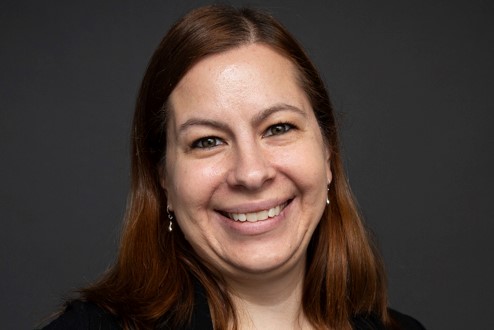Welcome to Brilliance@Work, a series of profiles about stellar marketing professionals and their best practices at work. During the next couple of months, we’ll feature market research experts.
Analyzing data is only part of conducting marketing research. Putting that data into context is what creates new knowledge and insights to support your organization’s success in the marketplace. Lindsey Clawson is Director of Knowledge Strategy at USP. She’s also a presenter at The Market Research Event (TMRE) on Nov. 5-7, 2019 at The Mirage Hotel in Las Vegas, Nevada.

Lindsey Clawson
As a preview to her presentation, Lindsey shares her perspectives on “Scanning the Horizon with Secondary Research.”
Peggy L. Bieniek, ABC: How is USP’s Secondary Research team helping to shape the organization’s future success?
Lindsey Clawson: The Secondary Research team helps USP see trends in context. For example, we may be on top of the opioids crisis in terms of knowing the latest statistics and interventions, but what is the scale of that versus pollution-related illnesses? We need to be responsive to hot-button, pressing public health needs, without losing sight of the global landscape. The secondary research discipline maintains that awareness, surveying the global health environment and placing new findings in relation to others. This approach empowers informed, proactive decision making at USP.
PB: What role does USP’s Secondary Research team play in helping to measure brand performance?
LC: Brand performance is something many teams at USP investigate and support. The unique approach from secondary research is tracking down additional, sometimes surprising, outlets which offer unique insights. In the past we’ve looked at citations of USP’s work in academic literature as one measure of performance, search engine results and where USP ranks compared to other standards providers, mentions of USP in trade press, and even comments made by relevant stakeholders such as regulators, public health organizations, or aid organizations. At a high level this might play out in an overall balance of positive versus negative mentions, but also pinpoints recent changes in the context of long-term brand recognition and performance.
Follow-up secondary research then investigates what factors may have led to a performance surge or decline. By understanding USP’s history, its major milestones and interventions, we can piece together the context surrounding that performance in order to paint a complete picture and thus inform our leadership and staff.
PB: How does USP’s Secondary Research team help tell a compelling marketing story?
LC: We’ve found that time and again, evidence and quotes from those impacted make a story stick. The team works to find credible data as well as expert quotes from news outlets or their own works, and weaves those into the research reports. Our primary research teammates are great counterparts in this regard, as both thought partners and sources of original survey findings with qualitative and quantitative content. With both the primary and secondary teams, we can look at prior survey results and secondary materials and piece together new takeaways. Once we develop these insights, the secondary research group finds different ways to highlight compelling points. We’ve studied layout and design, and taken tips from our marketing group to use elements such as pull quotes or enlarged, high impact data points to drive a point home. For example, in past work we anchored a slide on the number of people prematurely killed by pollution each year (7 million globally).
The data also needs to be pulled into a story that connects a trend or problem to stories about people. Dry data and complex charts are great for backup Appendix documentation, but within the report we try a more narrative format. The team will use headers that advance the narrative, which is then fleshed out with slide text and charts. Together these elements present the secondary sources in a way which leads to a novel insight. We take the reader along on this path of discovery.
PB: What will people gain from your conference presentation?
LC: They will learn about what a strong, nimble secondary research team can accomplish. I’ll be sharing approaches we take, from methodologies to collaboration and internal consulting, to how we overcome common challenges in the B2B space where information is not as consistent or comprehensive as in B2C. Attendees will learn about the approaches and takeaways which resonate best with different audiences – C-suite executives down to front line staff –with a sharp eye to the end benefit of such work when it resonates with those stakeholders.
There will also be a discussion about what the way forward may be, integrating different resources such as contract or temp-to-hire and globally dispersed researchers, refining our skills and reflecting on opportunities to improve, and utilizing new digital capabilities to amplify the impact of our work within the organization such as through Knowledge Management and Communities of Practice.
Want to hear more from Lindsey? Join us at The Market Research Event (TMRE). Learn, network and share best practices with the most influential leaders in market research. Stay connected at #TMREVENT.

